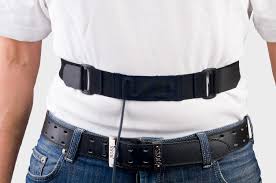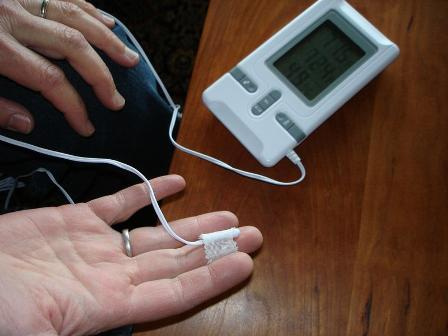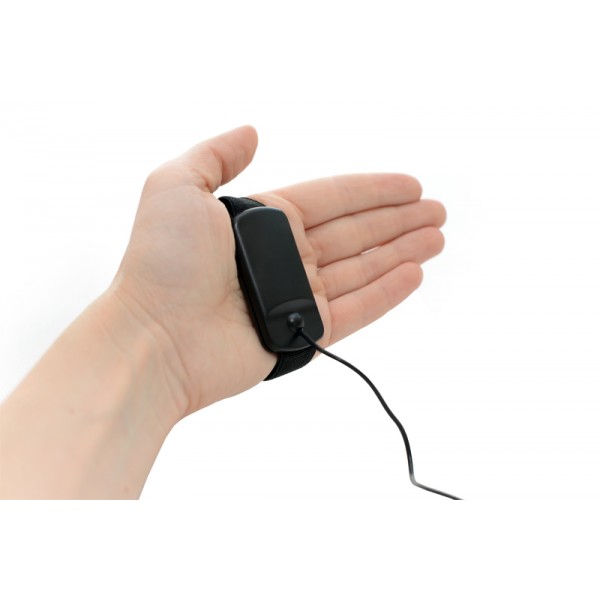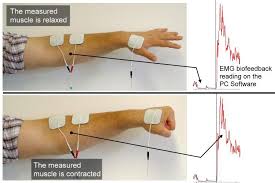Biofeedback

This type uses finger or earlobe sensors with a device used to detect blood volume changes (photoplethysmograph). Or sensors placed on your chest, lower torso or wrists use an electrocardiograph (ECG) to measure your heart rate and how your heart rate varies. (Mayo Clinic)

Respiration Training
During respiratory biofeedback, bands are placed around your abdomen and chest to monitor your breathing patterns and respiration rate. (Mayo Clinic)

Temperature Training
Sensors attached to your fingers or feet measure blood flow to your skin. Because your temperature often drops when you're under stress, a low reading can prompt you to begin relaxation techniques. (Mayo Clinic)

Galvanic Skin Response
Sensors attached around your fingers or on your palm or wrist with an electrodermograph (EDG) measure the activity of your sweat glands and the amount of perspiration on your skin, alerting you to anxiety. (Mayo Clinic)
